Unsolved: The encrypted letters from Charles I to his son
The English King Charles I sent several coded letters to his son shortly before his execution in 1648. These texts remain unsolved to this day.
How about a little history? Charles I (1600-1649) was King of England, Scotland and Ireland from 1625 to 1649. He came into conflict with Parliament and tried to rule without it, triggering the English Civil War.
In 1647, Charles was first placed under house arrest and then imprisoned, but managed to escape to the Isle of Wight, an island off the south coast of England. There he sought the support of the governor, but he had him arrested again.
From November 1647 to December 1648, Charles I spent about a year in captivity at Carisbrooke Castle on the Isle of Wight. Today, this castle is a tourist attraction.
From his imprisonment in Carisbrooke Castle, Charles sent a series of coded letters to his son. To the best of my knowledge, these remain unsolved. At the end of 1648, Charles was brought back to London and executed there in January 1649.
The encrypted letters
A week from today, on April 18, 2021 at 7:30 pm (German time), I will be co-presenting a webinar with Elonka Dunin on “More famous and not-so-famous unsolved codes”. It will be hosted by the National Museum of Computing in Bletchley Park. We will present ten unsolved ciphers, including the Beale cryptograms and the encrypted notes of murder victim Paul Rubin. Those who wish to participate must register at the linked website. Maybe one or the other reader is interested.
Actually, Elonka and I were going to use largely the same slides as we did for our talk with the same title that we gave at the ICCH forum. However, my blog readers threw a wrench in our plans. For one thing, they have shown that the Rilke cryptogram is not an encrypted text and therefore cannot be solved. For another, blog readers Adam Sampson and Matthew Brown solved the Utah War cryptogram. So we had to cut two stories and find replacements. Given the many unsolved crypto mysteries I’ve already covered on my blog, that wasn’t difficult.
Among other things, Elonka and I chose the encrypted letters of said Charles I as a replacement topic. On Satoshi Tomokiyo’s (highly recommended) website you can read four of these letters as transcriptions. Last year I blogged about this story.
Elonka and I did some research and came across a book on the British Library website with the original of one of the letters mentioned. We also found three other letters from this series in the same book. Today I would like to present these seven messages in total. As you can easily see, Charles I encoded only parts of his texts in each case. However, we can assume that these passages contain what is important.
Letter to Benjamin Worsley (May 22, 1648)
The first letter on Satoshi’s website is not addressed to Charles’ son, but to the politician and scientist Benjamin Worsley. According to Satoshi, however, this letter could be encrypted with the same or a similar method. Unfortunately, I do not know of an image of the original. Here is Satoshi’s transcription:
Z: / I am verrie well satisfied with the discreete & carefull account that you have given me of my Business & particularly that you did 208 343 294 74 9 45 86 18 96 1 40 82 395 380 2 20 3 230 388 45 36 4 11 7 43 31 62 270 248 now it will be 36 19 5 32 39 12 37 8 97 I desyre you to enquyre whether or not 396 213 355 204 28 21 363 257 64 36 46 9 32 395 42 35 14 53 38 23 18 50 88 but for this 236 308 267 356 282 96 62 86 205 17 356 66 50 97 206 231 248 38 1 20 2 230 388 46 36 257 208 86 25 268 8 3 50 240 6 51 248 416 303 78 9 68 45 in the meane Tyme lett me know 379 4 28 5 348 354 the …. 206 18 So I rest
Your asseured Frend,
J.
Letter to his son (August 1, 1648)
On August 1, Charles I wrote to his son (page 208r in the said book):
Here is Satoshi’s transcription:
I had written to you sooner had I knowen where you had been; and particularly that express which, upon Saterday last, I directed to your brother I had sent to you, but I thought that 379 361 185 28 20 329 592 60 93 5 214 126 379 90 37 1 258 6 2 212 370 196 379 245 339 363 329 165 246 16 50 212 196 444 149 13 44 32 14 26 10 78 43 65 329 331 380 17 49 29 338 77 102 365 5 20 532 9 41 282 212 202 379 371 182 339 337 212 140 30 74 5 50 60 107 381 214 339 93 85 6 23 220 78 57 152 5 65 I command you to doe nothing, whether it concerns War or Peace, but with the advice of your Councell; and that you be constant to those grounds of Religion and Honor which ….
[PS] This Cypher which now I write in, is that which was sent you by the noble frend who conveis this Letter to you from me.
Letter to his son (September 1, 1648)
On September 1, Karl wrote the following letter (page 209r in the said book, unfortunately I do not have a transcription yet):
Letter to his son (October 3, 1648)
The next letter is dated 3 October. A scan of the original is not known to me. Instead, the text is printed in a book from the 18th century:
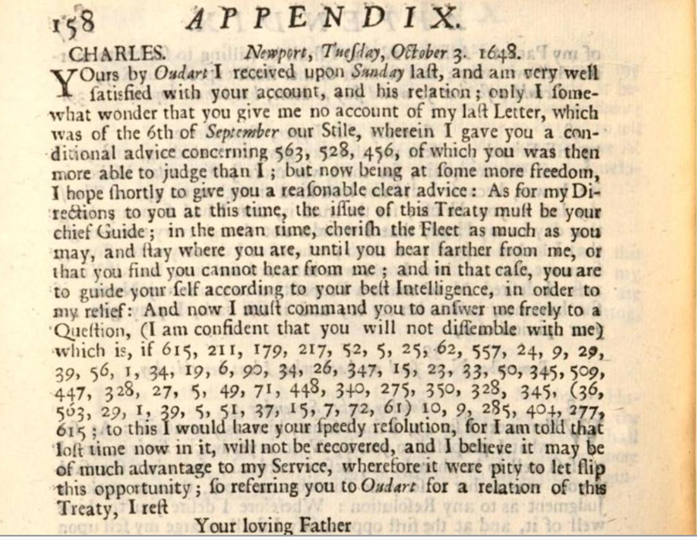
Quelle/Source: A Vindication of King Charles the Martyr: Proving that His Majesty was the … by Thomas Wagstaffe
Satoshi’s website has the following transcription:
Your by Oudart I received upon Sunday last, and am very well satisfied with your account, and his relation; only I somewhat wonder that you give me no account of my last Letter, which was of the 6th of September our Stile, wherein I gave you a conditional advice concerning 563 528 456, of which you was then more able to judge than I; but now being at some more freedom, I hope shortly to give you a reasonable clear advice: ….
And now I must command you to answer me freely to a Question, (I am confident that you will not dissemble with me) which is, if 615 211 179 217 52 5 25 62 557 24 9 29 39 56 1 34 19 6 90 34 26 347 15 23 33 50 345 509 447 328 27 5 49 71 448 340 275 350 328 345 (36 563 29 1 39 5 51 37 15 7 72 61) 10 9 285 404 277 615 ; to this I would have your speedy resolution, for I am told that lost time now in it, will not be recovered, ….
Charles I to Prince Charles, Newport, 3 October 1648 (from Vindication)
Letter to his son (November 6, 1648)
On November 6, Karl wrote the following letter (page 218r in the book, unfortunately I do not have a transcription yet):
Letter to his son (November 7, 1648)
On November 7, Karl apparently wrote twice to his son. Here is the transcription of the first letter (I do not have the original):
Let none decypher this but your selfe, or my Lord Culpeper. ….I must desyre of you an account of the receipt of my former Letters, to witt fyve in October, besydes one yesterday; in some of which I gave you an advice 447 536 350 563 278 557 334 179 350 613 447 563 51 9 24 5 442 as allso 210 410 26 54 15 25 516 557 50 61 7 9 27 5 10 447 602 429 340 325 299 332 For other things I refer you to my former Letters, and to the obedience of your Mother’s commands. So God bless you, and send you perfect healthe and prosperity
Letter to his son (November 7, 1648)
From the second letter of November 7, Elonka and I found the following scan (page 219r):
I do not have a transcription so far. Note that the encoded part is identical with the first letter of the day. The rest of the text, however, is different.
Solution approaches
I strongly assume that Charles I used a nomenclator for the encodings. Well-done nomenclator ciphers are often only solvable if you can find the description of the nomenclator somewhere. Blog reader Norbert Biermann was successful in a similar case, as I recently reported. The nomenclator of Charles I, on the other hand, has not yet been located by anyone, to my knowledge.
Bad or poorly applied nomenclators can sometimes be deciphered by frequency analysis and word guessing. But in this case the amount of text is probably too small to be successful.
If someone can say more about this topic, please let me know.
If you want to add a comment, you need to add it to the German version here.
Follow @KlausSchmeh
Further reading: Wer löst diese Verschlüsselung aus dem Dreißigjährigen Krieg?
Linkedin: https://www.linkedin.com/groups/13501820
Facebook: https://www.facebook.com/groups/763282653806483/

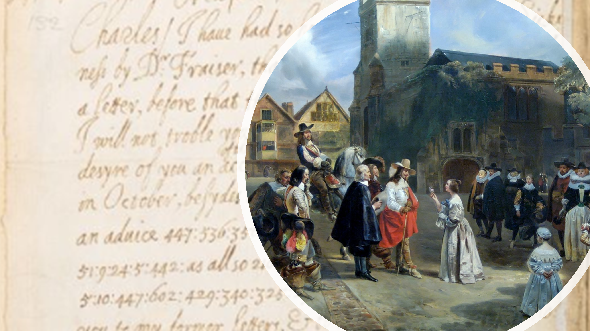

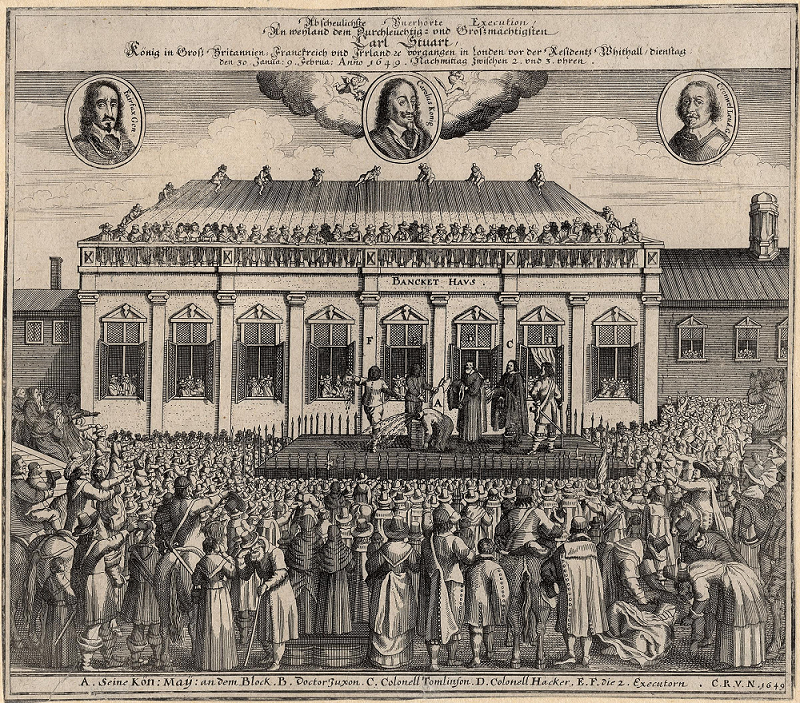
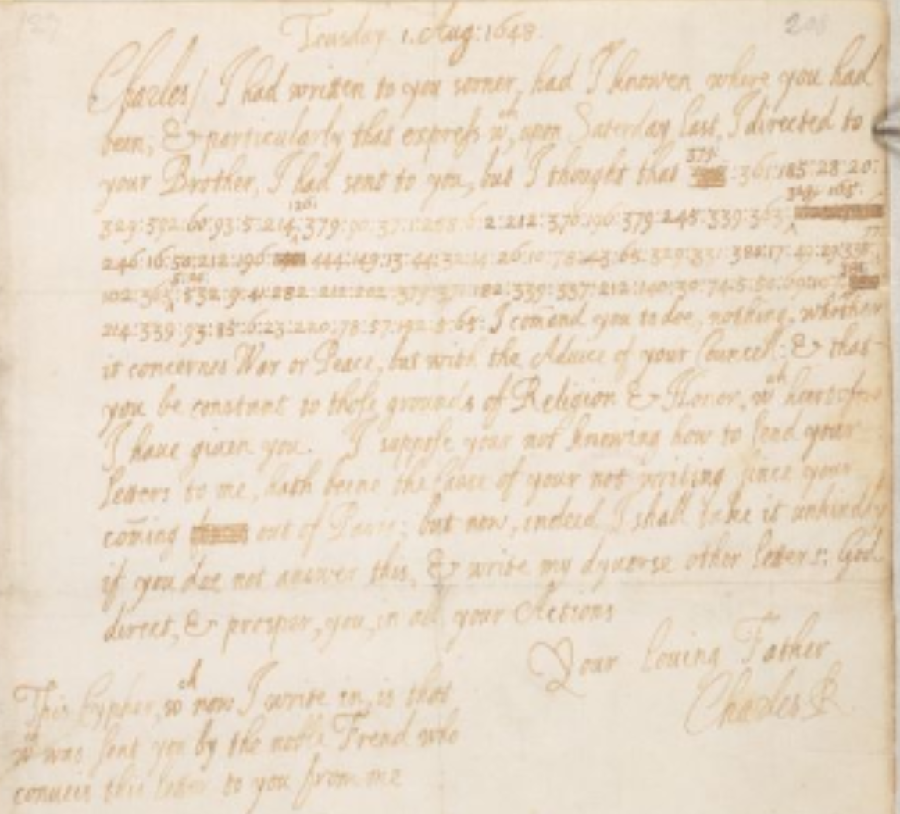

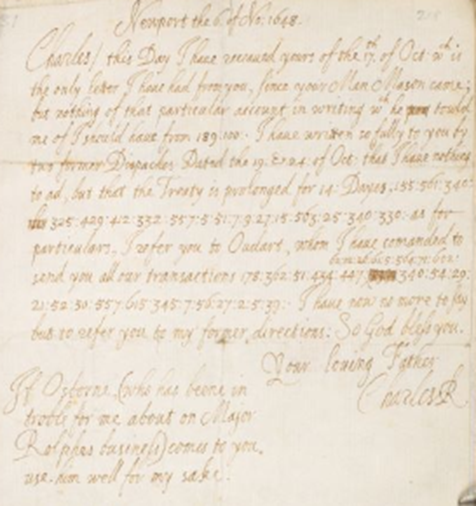
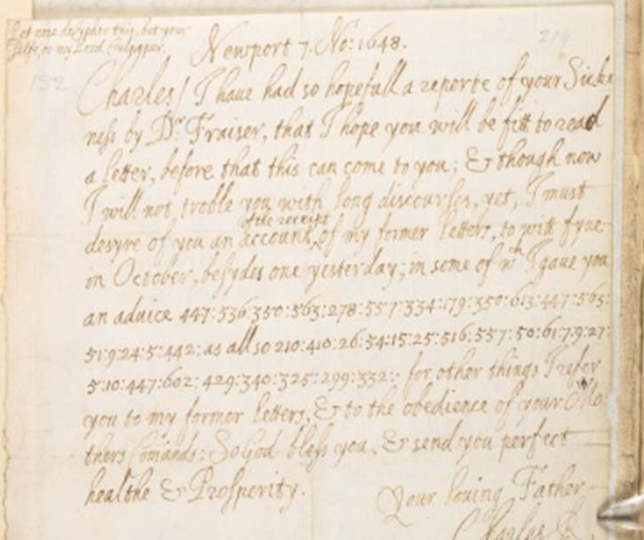

Letzte Kommentare